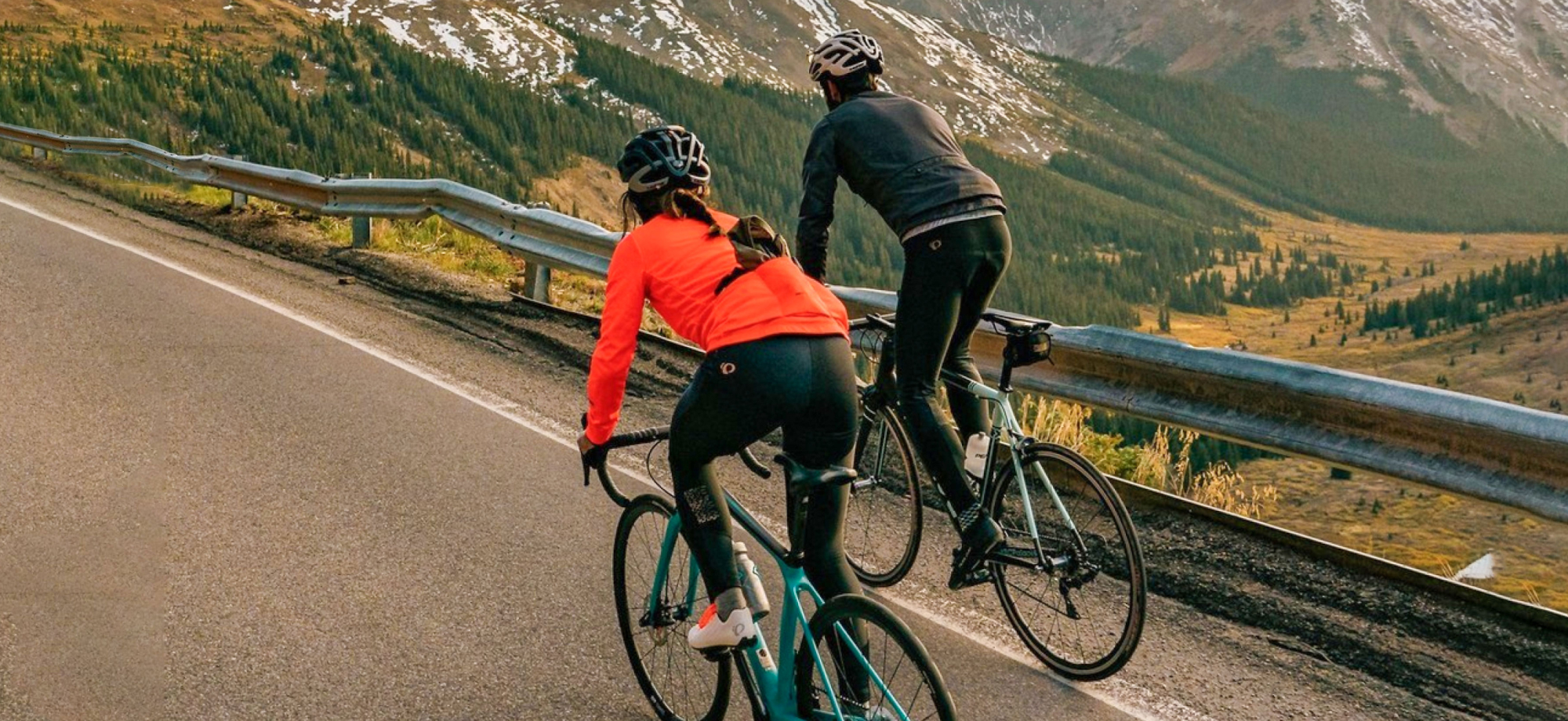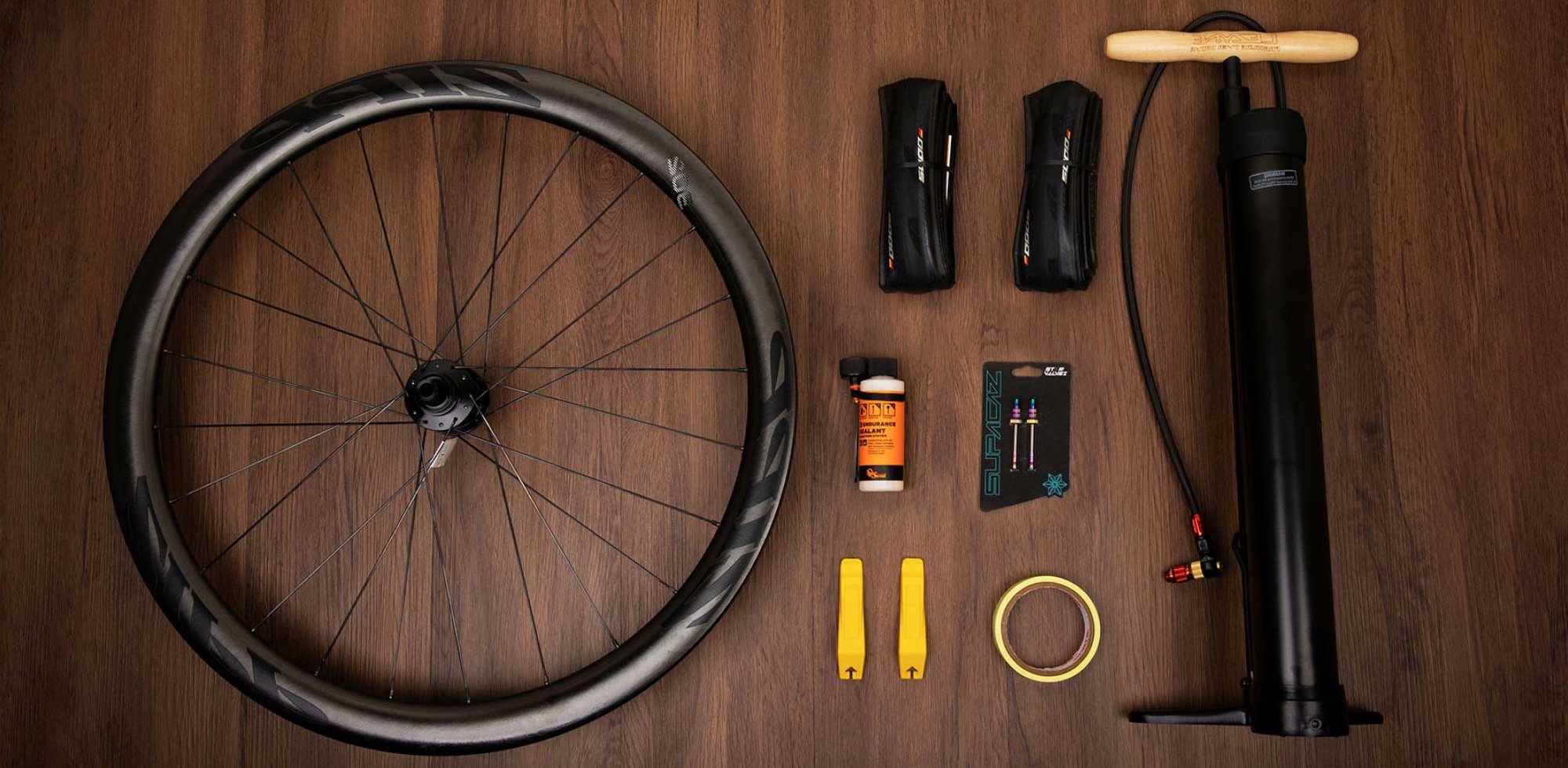The Science of Cold Tires
How Temperature Affects Your Road Bike's PSI

A Chilly Start
As I headed out to ride this morning, I daringly left behind the cozy 70-degree sanctuary of my home and braved the frosty California winter air. Not long after starting to ride, I noticed that my tires seemed to be a little squishier than when I started. My tubeless tires tend to lose some air while in storage, so I am religious about pumping them to 60 PSI before every ride, but this feels lower than usual. It seems that the cold has deflated my perfectly calibrated tires causing my bike to feel sluggish and handle poorly.
Well, that mostly makes sense. Air molecules contract as they cool – leading to lower tire pressure. But how much of an effect will it have on PSI and how can I still ride at my optimal pressure, even when it’s cold out?

Inflation Games
While 30 degrees Fahrenheit probably seems balmy compared to most of the country, to my West Coast blood, 30 feels like it’s straight out of the Arctic. After inflating my tires inside the house, I can’t help but assume that the sudden 40-degree temperature drop will wreak havoc on my pressure levels.
After doing a little research, it seems there are two primary ways to handle this situation. The first is to pre-cool your bike by placing it outside before you inflate the tires. To me, this seems like too much work – plus, I don’t want to go out and freeze my butt off any sooner than necessary.
The second method, which I prefer, is to slightly overinflate your tires when filling them inside the house. This way they stabilize at or near the desired pressure out on the road. While this sounds great, my inner perfectionistic personality can’t be satisfied with simply guessing at the best pressure to use – I need some numbers to back it up!

Ideal Tire Pressure
In the age of tubeless tires, choosing the right pressure is more complicated than it used to be. Gone are the days of maxing out your road tires at 120 PSI and hoping for the best. Many tire and rim manufacturers put out intricately detailed charts to find your optimal pressure – like this guide from ENVE. Once you get used to riding at a dialed-in PSI, even slight adjustments are noticeable.
According to the road cycling experts at Flo Cycling, tire pressure changes at approximately 2% for every 10 degrees of temperature change. Based on this math, a 40-degree temperature drop would take my tires from around 60 PSI down to 55 PSI. I know some riders might not think that’s much, but for me, that’s a big change! For roadies using tubes and higher pressure, the shift will be even more pronounced – a tire running 100 PSI would drop all the way down to 92 PSI.
For the sake of keeping this article short, I’m not going to get into all the science and math here, but if that’s your jam, check out this article from Flo Bikes.

What Happens in The Summer?
So, if that’s what happens in cold weather, does the inverse apply to hot summer riding? Yep! The 2% rule of thumb still applies. If it’s 70 degrees in my air-conditioned house and I go out for an afternoon ride in 100-degree heat, I can expect my tire pressure to increase from 60 PSI up to around 63.5 PSI. It’s a small margin, but once again, could be worth considering.
If you do find yourself heading out for a ride in triple-digit heat, stay hydrated and check out our article on Summer Riding Tips.

Real World Application
Next time I roll out for a chilly start, I’m going to try and account for the drop in PSI that will surely occur. However, if I expect the temperature to rise throughout the ride, I might back off the over-inflation a little – instead of pumping all the way up to 65 PSI, I might just go to 63 PSI. That way, I won’t have too much pressure at the end of the ride when it’s warms up to 50 degrees.

Related Articles:
WINTER RIDING HOMEPAGE
We’ve compiled all our tips and tricks for staying warm and dry through the winter months.
Learn More

